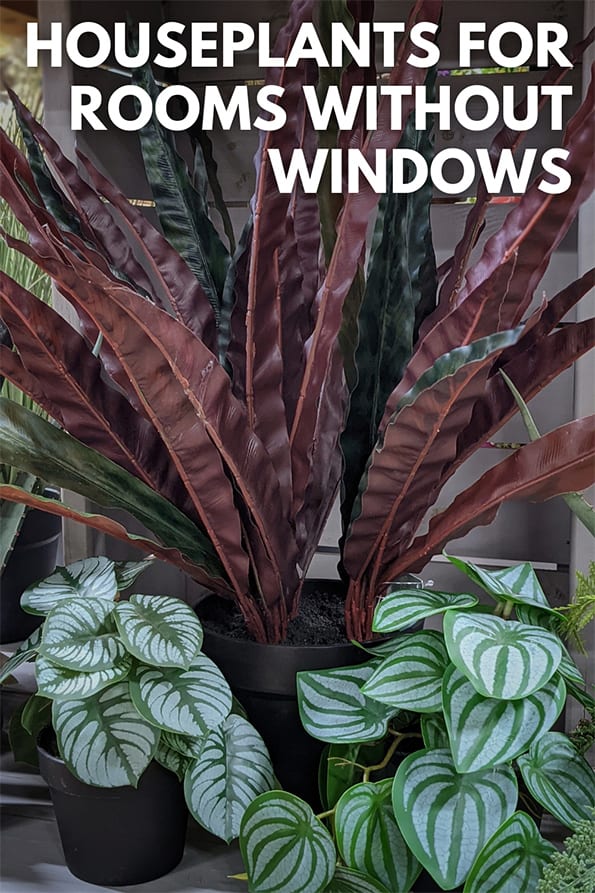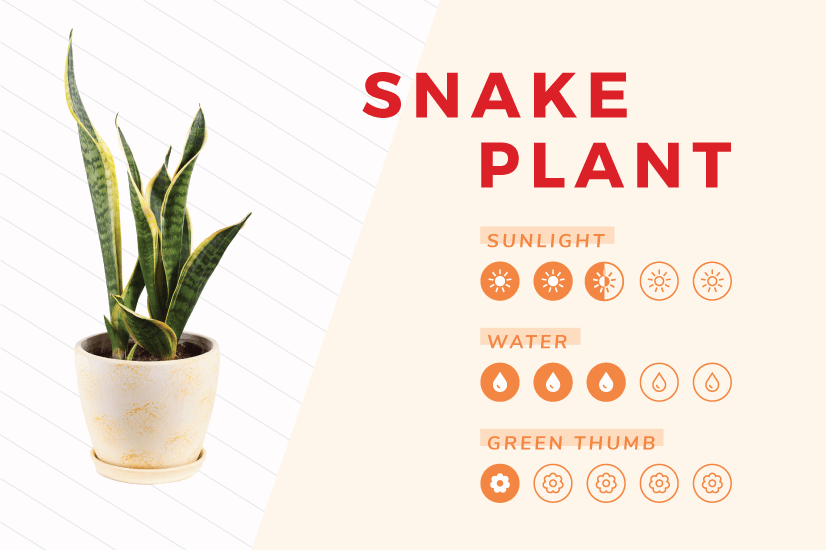Imagine stepping into your bathroom, a place of relaxation and renewal, and being greeted by a lush, thriving plant. You might wonder, Can a Snake Plant Live in a Bathroom Without Windows?
You’re not alone in this curiosity! Many plant lovers face the challenge of keeping greenery vibrant in low-light areas. Your bathroom could transform into a calming oasis with the right plant choice. Dive into the secrets of nurturing a snake plant in such conditions, and discover how it might just be the perfect fit for your space.
Keep reading to unlock the mysteries of plant care that could bring life to even the darkest corners of your home.
Snake Plant Characteristics
The Snake Plant is a popular choice for indoor spaces. Its unique characteristics make it a favorite among plant enthusiasts. Known for its striking appearance, the Snake Plant is also highly resilient. Let’s explore its natural habitat and adaptability.
Natural Habitat
Snake Plants are native to West Africa. They thrive in dry, rocky areas. This plant is used to warm climates and low humidity. It can survive in challenging conditions, making it ideal for indoor environments.
Adaptability
The Snake Plant adapts well to various conditions. It can tolerate low light, perfect for windowless bathrooms. It doesn’t require frequent watering. This plant can store water in its leaves. Its resilience allows it to flourish with minimal care.
Light Requirements
Snake plants are known for their resilience. They adapt to various environments. But can they thrive in a bathroom without windows? Light is essential for any plant’s survival. Understanding the light requirements of a snake plant helps answer this question.
Low Light Tolerance
Snake plants tolerate low light conditions well. They survive in dim areas. This makes them ideal for windowless bathrooms. They don’t need direct sunlight. Their leaves efficiently use available light. This allows them to photosynthesize even with minimal light.
Artificial Light Solutions
Artificial light can support a snake plant in a dark bathroom. LED grow lights are a popular choice. They mimic natural sunlight. Place the light close to the plant. This helps the plant receive enough energy. A timer can automate the light schedule. This ensures the plant receives consistent light daily.
Humidity And Temperature
Snake plants, known for their resilience, can thrive indoors under various conditions. Understanding humidity and temperature is crucial for its health, especially in windowless bathrooms. These factors significantly influence the plant’s growth and wellbeing. Let’s explore how humidity and temperature play a role in nurturing a snake plant.
Humidity Benefits
Bathrooms usually have higher humidity levels due to frequent showers. Snake plants benefit from this as they naturally thrive in humid environments. High humidity prevents the plant from drying out. It helps maintain moisture in the leaves, ensuring healthier growth. This makes a bathroom an ideal spot for this plant.
Temperature Preferences
Snake plants prefer moderate temperatures, often between 60°F and 80°F. Bathrooms typically maintain these temperatures, especially in homes with controlled climates. Avoid extreme temperature fluctuations, which can stress the plant. Consistent warmth supports its growth and vitality. This stability is crucial for its long-term health.
Air Quality Improvement
Snake plants are often praised for their ability to enhance air quality. Their natural properties make them ideal for closed spaces like bathrooms. Without windows, a bathroom can become stale. Snake plants help maintain freshness and a healthier environment.
Oxygen Production
Snake plants produce oxygen even at night. Most plants release carbon dioxide after dark. This unique feature benefits windowless bathrooms. Fresh oxygen can improve the air and make the room feel less stuffy.
Toxin Removal
Snake plants also remove toxins from the air. They absorb harmful substances like formaldehyde and benzene. These toxins often come from cleaning products and personal care items. A snake plant can reduce these toxins, enhancing air quality significantly.
Maintenance Tips
Snake plants are a popular choice for bathrooms, even without windows. Their adaptability makes them ideal for low-light environments. Proper care ensures their longevity and health. Here are some maintenance tips for keeping your snake plant thriving in a windowless bathroom.
Watering Schedule
Snake plants require minimal water, especially in low-light conditions. Overwatering can lead to root rot. Check soil moisture before watering. Water the plant every two to four weeks. Ensure the topsoil is dry before each watering. Use a small amount of water to avoid excess moisture.
Soil And Potting Needs
Well-draining soil is crucial for snake plants. Choose a pot with drainage holes. This prevents water from accumulating at the bottom. Use a cactus or succulent potting mix. This mix ensures proper aeration and drainage. Repotting is necessary every two to three years. This allows for fresh soil and root growth.

Credit: www.ourhouseplants.com
Potential Challenges
Snake plants are resilient and adaptable, making them popular houseplants. Yet, placing them in a bathroom without windows presents unique challenges. These plants thrive in low light, but the absence of natural light can hinder their growth. Additionally, the bathroom environment may introduce other issues. Let’s explore these potential challenges.
Mold And Mildew Risks
Bathrooms are often humid spaces. High humidity levels can lead to mold and mildew growth. This can affect both your plant and your bathroom. Snake plants can tolerate some humidity but excess moisture can cause problems. Mold can form on the soil or leaves, impacting the plant’s health.
Pest Concerns
Bathrooms without windows can attract pests. Fungus gnats and other insects may thrive in damp conditions. These pests can harm the plant by feeding on its leaves or roots. Keeping the soil dry helps reduce pest issues. Regularly checking your plant for signs of pests is important.
Alternative Plant Options
Snake plants thrive in low-light conditions, making them ideal for bathrooms without windows. Their ability to tolerate humidity and indirect light ensures healthy growth. This resilient plant adds a touch of green to any space, purifying air while requiring minimal care.
In a windowless bathroom, thriving greenery can still exist. Snake plants aren’t the only choice. Explore alternative options that can flourish in low-light conditions. These plants bring beauty and freshness to enclosed spaces. Their resilience and adaptability make them ideal for bathrooms without natural light.
Other Low-light Plants
Peace lilies thrive in low-light, adding elegance with their white blooms. Spider plants are easy to care for and tolerate shade well. Pothos are versatile, their trailing vines creating a lush atmosphere. ZZ plants are hardy and require minimal light to grow. Ferns love humidity and adapt well to dark corners.
Choosing The Right Plant
Evaluate the bathroom’s size and humidity levels. Consider plant maintenance and care routines. Peace lilies need regular watering. Spider plants require occasional pruning. Pothos grow quickly but need trimming. ZZ plants are low-maintenance, perfect for busy lifestyles. Ensure ferns get enough moisture to avoid wilting.

Credit: www.ourhouseplants.com

Credit: kitchencabinetkings.com
Frequently Asked Questions
Can Snake Plants Survive In Low Light?
Yes, snake plants are highly adaptable to low light conditions. They can thrive in dim environments like bathrooms without windows. However, they grow slower and may not reach their full potential. Occasional exposure to indirect sunlight can enhance their health and growth.
Do Snake Plants Need Direct Sunlight?
Snake plants do not require direct sunlight to thrive. They prefer indirect light and can survive in low-light conditions. Direct sunlight might damage their leaves. Place them in a spot with filtered light or artificial lighting for optimal growth.
How Often Should I Water A Snake Plant?
Snake plants need infrequent watering, especially in low light. Water them every 2-6 weeks, depending on humidity and temperature. Allow the soil to dry out completely between waterings to prevent root rot. Overwatering can harm the plant more than underwatering.
Are Snake Plants Good For Air Purification?
Yes, snake plants are excellent air purifiers. They remove toxins like formaldehyde and benzene from the air. They also produce oxygen and improve indoor air quality. This makes them ideal for bathrooms and other closed spaces.
Conclusion
Snake plants can survive in low-light bathrooms. Their resilience is impressive. They tolerate humidity and indirect light well. Regular care keeps them thriving. Water sparingly to avoid root rot. Choose a well-draining pot. These plants purify air effectively. Great for small spaces.
A perfect choice for windowless bathrooms. Even beginners can manage them easily. Their low-maintenance nature is a plus. Consider adding one to your bathroom. Enjoy a touch of greenery indoors. Enhance your space with minimal effort.
